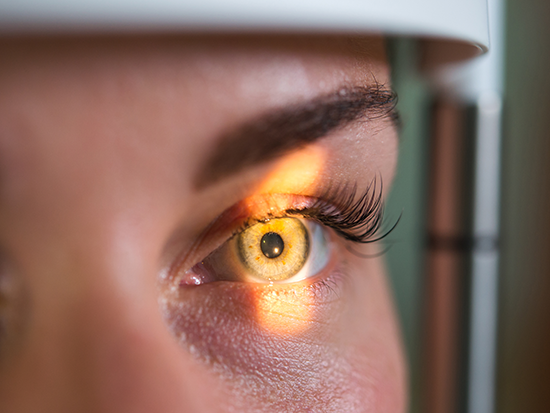 UAB researcher finds that presumed retinal gliosis may serve as a potential biomarker for Alzheimer’s disease-related neuroinflammation in the eye.Researchers at the University of Alabama at Birmingham have found a potential link between putative retinal gliosis and Alzheimer’s disease in a recently published study. The study, published in the Investigative Ophthalmology & Visual Science journal, demonstrates that putative retinal gliosis could be a sign of Alzheimer’s disease-related neuroinflammation, an inflammatory response within the brain or spinal cord.
UAB researcher finds that presumed retinal gliosis may serve as a potential biomarker for Alzheimer’s disease-related neuroinflammation in the eye.Researchers at the University of Alabama at Birmingham have found a potential link between putative retinal gliosis and Alzheimer’s disease in a recently published study. The study, published in the Investigative Ophthalmology & Visual Science journal, demonstrates that putative retinal gliosis could be a sign of Alzheimer’s disease-related neuroinflammation, an inflammatory response within the brain or spinal cord.
Putative retinal gliosis refers to changes in the retina caused by the activation of glial cells, which are support cells that become activated when there is damage or disease in the retina. In this study, Edmund Arthur, O.D., Ph.D., an assistant professor in the UAB School of Optometry, found that presumed neuroinflammation was larger in the retina of preclinical Alzheimer’s disease patients compared to similarly aged controls, like from postmortem tissues and animal models of Alzheimer’s disease. Preclinical Alzheimer’s disease patients are individuals who are cognitively unimpaired but have elevated amyloid beta (Aβ) on positron emission tomography, or PET, imaging.
While mouse models of Alzheimer’s disease and postmortem biopsy of patients with Alzheimer’s disease have previously revealed retinal glial activation comparable to central nervous system immunoreactivity, this is the first time presumed neuroinflammation was quantified live in the retina of preclinical Alzheimer’s disease patients using imaging technology that is present in most eye clinics.
“Neuroinflammation typically precedes neurodegeneration and clinical symptoms of dementia in Alzheimer’s disease,” Arthur said. “As an extension of the brain, the retina of the human eye provides a potential non-invasive window for early diagnosis of Alzheimer’s disease. We quantified presumed neuroinflammation in the retina of preclinical Alzheimer’s disease patients using a low-cost and non-invasive technique compared to standard neurodiagnostic methods.”
Alzheimer’s disease is a progressive neurodegenerative disease that is one of the most common causes of dementia in older adults, accounting for about 60 percent to 80 percent of all cases. Pathological changes in Alzheimer’s disease typically precede any Alzheimer’s disease symptoms by almost two decades. The progression of Alzheimer’s disease, or the Alzheimer’s disease continuum, is when pathological changes in the brain that are typically not noticeable to the individual with Alzheimer’s disease transition into more noticeable symptoms such as memory problems or disability. The preclinical phase of Alzheimer’s disease is the period in which an individual does not show symptoms but shows biomarker changes that indicate Alzheimer’s disease in the brain. The preclinical phase is followed by cognitive impairment. The goal of these researchers is to find ways to detect Alzheimer’s disease during the preclinical phase when emerging treatments are the most effective using a low-cost and non-invasive alternative compared to standard neurodiagnostic methods such as PET and cerebrospinal fluid assessment.
“The next line of research involves a longitudinal study in a large, more diverse population to look at between and within subject changes over time as well as association with plasma-based biomarkers,” Arthur said. “We will also investigate the diagnostic value of a multimodal model of retinal gliosis and plasma-based biomarkers for detecting preclinical Alzheimer’s disease compared to each biomarker alone.”